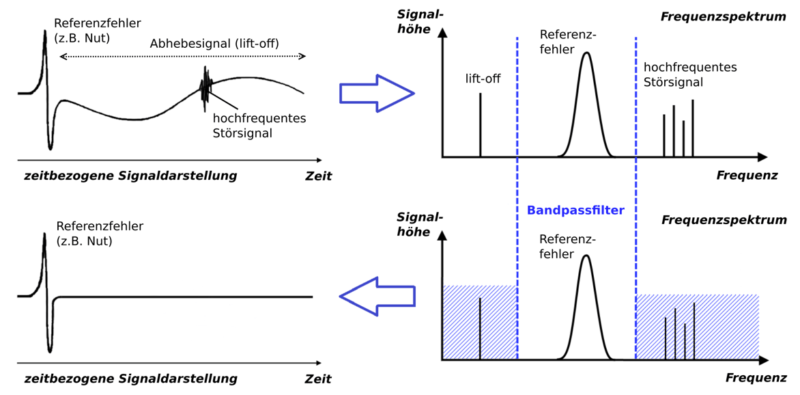A band pass filter is produced from the combination of a low-pass and a high-pass filter. This means that only a central frequency segment, which only contains the signals of interest, is allowed through unaffected. Only low-frequency and high-frequency interference signals are suppressed. In band pass filters a lower and an upper cut-off frequency are set (see bandwidth). Band pass filters can be used in eddy current testing for example to weaken or eliminate conductivity variations, geometry variations, distance signals (lift-off), as well as high-frequency electromagnetic interference and electronic device noise. It should be noted that the frequency spectrum of the interference signals and the signals of interest depend on both the actual testing speed as well as on the type and geometry of the probe used: the faster the testing speed and the smaller the length of coverage of the coil used, the higher the frequency of the signals (> “shorter pulses”), and for slower testing speeds and for relatively large coil dimensions the frequencies of the signals are correspondingly lower (> “longer pulses”). The use of a band pass filter is also called “dynamic” testing, because the frequency spectrum of the demodulated signal only contains variable (dynamic) content (e.g. rotor applications). This means that the signal point always returns to the coordinate origin, even if the probe is not moved.

